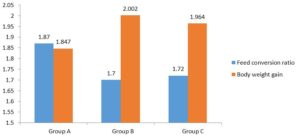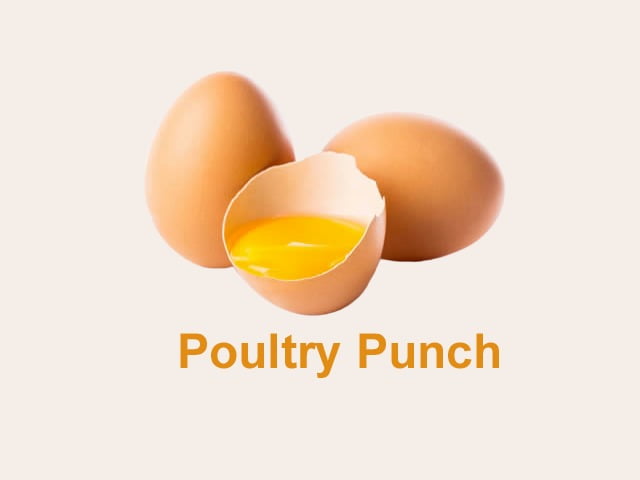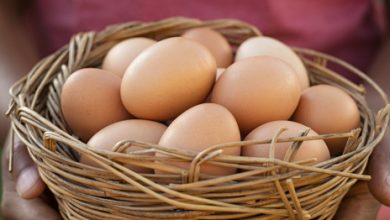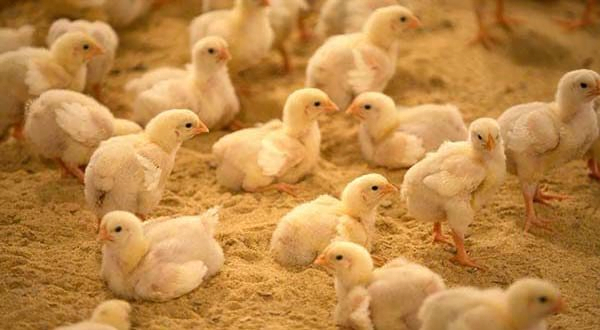PHYTOACTIVES (NUBIOTIC) AS ALTERNATIVE TO ANTIBIOTIC GROWTH PROMOTERS IN BROILERS
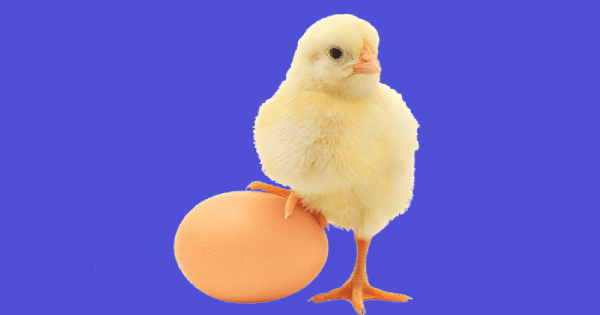
Dr.Meenal Bharadwaj*, Dr.Saurabh Agarwal, Dr.Vandana Sharma
*Author of correspondence, Veterinary officer ,Vikas Bhavan,Meerut ,245001
Abstract
An experiment was conducted to evaluate the efficacy of a phytobioactive growth promoter in broiler chickens. A total of 450 ‘Cobb 500’ day-old broiler chicks were randomly divided into three groups of 150 birds each, viz. A, B & C .The groups were further subdivided into triplicates of 50 birds each. Group A served as control , Group B chicks were supplemented with Phytoactives (Nubiotic) from day 7 till day 28 @1ml/Litre of drinking water and Group C chicks supplemented with antibiotic (Lincomycin @5ppm). Average body weight and feed intake was recorded on day 0, 11, 29 and 42. The mean body weight was significantly (p<0.05) higher in birds of group B (2039.17±113.2g) as compared to Group A (1882.65±102.6 g) and Group C (1998.34±107.9g). The FCR in birds of group A was 1.87, group B was 1.70 and in group C was 1.72. It was concluded that the growth promoting potential of phytoactives is at par with antibiotics without affecting the food chain.
Key words: Phytoactives, Growth promoter, Body weight gain.
Introduction
Antibiotic growth promoters (AGPs) have widely been used to improve performance and feed utilization amongst food animals. These antibiotics are used as prophylactic agents in sub therapeutic doses , for promoting growth, improving feed conversion rate and general well being of meat producing animals as well as poultry (Chattopadhyay MK, 2014; Khodambashi Emami et al., 2012; Barcelo D, 2007 Harms et al., 1986). Nevertheless, such sub therapeutic doses are accompanied with adverse effects too. The withdrawal of sub therapeutic doses of antibiotic growth promoters not only affects or reduces productive performance, but also increases morbidity and mortality in poorly maintained flocks (Dibner and Richards, 2005). Moreover, the use of antibiotic growth promoters has been criticized due to its possible role in the occurrence of antimicrobial resistance in humans and drug resistivity issues in poultry. There is a growing concern over the transmission and proliferation of resistant bacteria via the food chains.
With the ban of AGPs as growth promoters in European union and the increasing consumer demand for antibiotic free meat, the use of AGPs in poultry production remains limited. Various other strategies to promote growth and enhance feed conversion have also contributed substantially to the poultry industry. Organic acids, phytogenic feed additives (botanicals, or PFAs), probiotics (direct-fed microbials, or DFMs) and prebiotics have all been identified as potential antibiotic replacements (Dhama et al.,2018. The use of phytobioactives as AGPs in poultry production also opens a better horizon with maximum efficacy and no residual effects, in a cost effective manner, without affecting the food chain or inducing drug toxicity (Patterson and Burkholder, 2003; Akinleye et al., 2008; Huyghebaert et al., 2011)
Keeping in view the potentials of phytobioactives and the limitations of AGPs, this study was undertaken to access the efficacy of a essential oil based AGP as a replacement to the antibiotic growth promoter, Lincomycin.
Materials and Methods – The experiment to access the efficacy of a herbal growth promoter against traditionally used AGP was conducted at Puja poultry farms, Chilkana road, Saharanpur. A total of 450 ‘Cobb 500’ day- old broiler chickens were randomly divided into three equal groups (n = 150), namely Groups A, B and C, which were sub divided into triplicates of 50 birds each to get triplicate results. The study was carried out for a period of 42 days. Chicks of Group A served as control and were given standard diet without any kind of supplements, chicks of Groups B were supplemented with Nubiotic (Oregano oil, Thyme oil, Cinnamaldehyde, prebiotics, probiotics and amino acids) from day 7 till day 28 in drinking water @1ml/Litre of drinking water and Group C were supplemented with antibiotic (Lincomycin @5ppm). Phytoactives (Nubiotic ) and antibiotic (Licomycin) incorporated in the drinking water for chickens from day 7 to day 28 is outlined in Table 1. All the birds were reared under deep litter system in well constructed and hygenic poultry shelters. Commercial feed and fresh tap water were provided ad libidum. Routine vaccination was done against Newcastle disease and Infectious bursal disease. Body weight was recorded four times during the study on days 0, 11, 29 and 42, respectively. One-way ANOVA was done to find out the significant variation in body weight gain among different treatment groups by using SPSS 17.0.
Table 1.Classification of Groups
| Groups | Treatments |
| A | Control group with normal drinking water |
| B | Drinking water supplemented with Phytoactives (Nubiotic) @1 ml/Litre
of drinking water |
| C | Drinking water supplemented with Antibiotic (Lincomycin) @5ppm |
Results and Discussion
The mean body weight of different groups at Day 0, 11, 29 and 42 is presented in Table II. The mean body weights of birds in group A (control) were 191.15 g, 976.73 g and 1882.65 g at day 11, 28 and 42, respectively. The mean body weight of group B chicks, supplemented with herbal growth promoter (Nubiotic), was 212.57 g, 1182.32 g and 2039.17 g at day 11, 28 and 42, respectively. The mean body weight of birds of group C, supplemented with antibiotic growth growth promoter (Lincomycin), was 218.16 g, 1202.42 g and 1998.34 g at day 11, 28 and 42, respectively. There was significant difference in body weight at day 11, 29 and 42 between supplemented groups and non supplemented group. However, no significant difference was observed at day 11 and day 29 for body weight between group B and group C. The body weight was significantly higher in group B birds compared to group A and group C at day 42. The same may be due to long lasting effects of essential oils than the AGPs. The cumulative FCR was better in group B as compared to group A and group C. This may be attributed to better effect of essential oils on digestion and feed utilization. The encouraging results of chicks in group B may be sequele to the phytobiotics, essential oils and amino acids present in Nubiotic ( Oregano oil, Thyme oil, Cinnamaldehyde, prebiotics, probiotics and amino acids).Such effects of essential oils and phytobioactives have also been documented by Mpofu et al. (2016) ); Li et al., (2015); Khodambashi et al.,(2012) and Zhang et al.,(2005).
The present formulation of phytobioactives along with probiotics and prebiotics seems to have acted as an immunomodulator, antioxidant and antibacterial, suppressing the growth of pathogenic microbiota. Previous studies have also documented the use of probiotic supplementation for countering enteric bacterial infections (Tellez et al., 2012; Dhama et al., 2011; Nava et al., 2009; Willis and Reid, 2008 and Vicente et al.,2007).
Considering the vast antimicrobial, antioxidant, antiviral, immunomodulatory and antiparasitic potentials of Oregano (Alagawany et al.,2018), it appears to have improved feed intake and feed conversion, enhanced digestion and expanded productive performance. Cinnamaldehyde has shown to have potent immunomodulatory effect (potentiated immune response) and improved gut integrity with enhanced growth (Awaad et al.,2014; Toghyani et al.,2011). Actives of Cinnamaldehyde might have maintained gut integrity, protected against pathogens and contributed towards better growth.
Multiple actions of Thymol include reduction of pathogenic microbiota, boosting of the antioxidant system due to polyphenol constituents (Abdulkarimi et al. 2011)increasing feed utilisation and enhancing immunity (Youssef et al., 2017; Ghazalah & Ali 2008; Zhang et al., 2005).
Table II. The mean body weight of broiler chickens
| Groups (n=150) | Body weight (g/bird) (Mean±SD) | |||
| Day | Day 0 | Day 11 | Day 29 | Day 42 |
| Group A | 35.43±1.64a | 191.15±8.60 a | 976.73±41.9 a | 1882.65±102.6 a |
| Group B | 36.76±1.67 a | 212.57 ±9.54b | 1182.32±57.4 b | 2039.17±113.2 b |
| Group C | 34.65±1.60 a | 218.16±11.12 b | 1202±58.2 b | 1998.34±107.9 c |
n= no. of broiler chicken in each group Values with different letters within the same column differ significantly (p<0.005).
TableIII. Total body weight gain of broiler chickens supplemented with vitamins
| Groups | Average weight gain | ||
| n=150 | Group A | Group B | Group C |
| From day 1 to 11 | 155.72 | 175.81 | 183.51 |
| From day 11 to 28 | 785.58 | 969.75 | 984.24 |
| From day 28 to 42 | 905.92 | 856.85 | 795.94 |
| Feed conversion ratio | 1.87 | 1.70 | 1.72 |
| Body weight gain | 1847.22 | 2002.41 | 1963.69 |
n= Number of broiler chickens in each group
The improved feed utilization and weight gain of group B chicks in the present study is suggestive of the synergistic effect of essential oils and phytobioactives which lead to a decrease in the pathogenic microflora, improved gut ecology, better digestibility of the nutrients as well as contributed to alleviation of oxidative damage.
Graph 1. Feed conversion ratio and body weight gain of different groups
Conclusion – With the ban on the use and increasing awareness of the limitations of antibiotic growth promoters in poultry , use of essential oils based formulation resulted in better growth rate , better FCR and a antibiotic free broiler production . Essential oils and phytobioactives lead to a decrease in the pathogenic microflora, improved gut ecology, better digestibility of the nutrients aswell as contributed towards alleviation of oxidative damage and a healthy poultry.
References
1. Abdulkarimi R, Daneshyar M, Aghazadeh A. (2011). Thyme (Thymus vulgaris) extract consumption darkens liver, lowers blood cholesterol, proportional liver and abdominal fat weights in broiler chickens. Ital J Anim Sci. 10:101–105.
2. Akinleye, S.B., E.A. Iyayi and K.D. Afolabi, (2008). The performance, haematology and carcass traits of broilers as affected by diets supplemented with or without biomin a natural growth promoter. World J. Agric. Sci., 4: 467-470.
3. Alagawany, M., Abd el-hack, M., Farag, M., Shaheen, H., AbdelL-latif, M., Noreldin, A., & Patra, A. (2018). The usefulness of oregano and its derivatives in poultry nutrition. World’s Poultry Science Journal, 74(3): 463-474.
4. Awaad MHH, Elmenawey M and Ahmed KA (2014) Effect of a specific combination of carvacrol, cinnamaldehyde, and on the growth performance, carcass quality and gut integrity of broiler chickens, 7(4): 284-290.
5. Barcelo D.(2007) Pharmaceutical-residue analysis. Trends Anal Chem 26:454-5.
6. Chattopadhyay MK(2014). Use of antibiotics as feed additives: a burning question. Front Microbial:5:334.
7. Dhama K ,Ruchi Tiwari, Khan UK,Chakraboty S,Gopi M , Karthik K ,Saminathan M,Desingu PA, Sukara L (2014) Growth Promoters and Novel Feed Additives Improving Poultry Production and Health, Bioactive Principles and Beneficial Applications: The Trends and Advances-A Review .Int J Pharmaco.10(3):129-159
8. Dhama, K., V. Verma, P.M. Sawant, R. Tiwari, R.K. Vaid and R.S. Chauhan, (2011). Applications of probiotics in poultry: Enhancing immunity and beneficial effects on production performances and health: A review. J. Immunol. Immunopathol., 13: 1-19.
9. Dibner, J.J. and J.D. Richards, (2005). Antibiotic growth promoters in agriculture: History and mode of action. Poult. Sci., 84: 634-643.
10. Gahazalan, A.A. And Ali A.M.(2008). Rosemary leaves as a dietary supplement for growth in broiler chickens J. Poultry Science 7(3):234-239.
11. Harms RH, Ruiz N, Miles RD.(1986)Influence of virginiamycin on broilers fed four levels of energy.Poultry Sci 65:1984-6.
12. Huyghebaert, G., R. Ducatelle and F. van Immerseel, (2011). An update on alternatives to antimicrobial growth promoters for broilers. Vet. J., 187: 182-188.
13. Khodambashi Emami N, Samie A,Rahmani HR, Ruiz-Feria CA.(2012) The effect of peppermint essential Oil and fructo-oligosaccharides, as alternatives to virginiamycin, on growth performance, digestibility,morphology and immune response of male broilers. AnimFeed Sci Technol:75:57-64.
14. Li HL, Zhao PY, Lei Y, HossainMM, Kim IH.(2015) Phytoncide, phytogenic feed additive as an alternative to conventional antibiotics, improved growth performance and decreased excreta gas emission without adverse effect on meat quality in broiler chickens.Livestock Sci 181:1-6
15. Mpofu DA, Marume U, Mlambo V,Hugo A.(2016) The effects of Lippia javanica dietary inclusion on growth performance, carcass characteristics and fatty acid profiles of broiler chickens. Anim Nutri;2:160-7.
16. Nava, G.M., M.S. Attene-Ramos, H.R. Gaskins and J.D. Richards, (2009). Molecular analysis of microbial community structure in the chicken ileum following organic acid supplementation. Vet. Microbiol.,137: 345-353.
17. Patterson, J.A. and K.M. Burkholder, (2003). Application of prebiotics and probiotics in poultry production. Poult. Sci., 82: 627-631.
18. Tellez, G., C. Pixley, R.E. Wolfenden, S.L. Layton and B.M. Hargis, (2012). Probiotics/direct fed microbials for Salmonella control in poultry. Food Res. Int., 45: 628-633.
19. Toghyani M, Toghyani M, Gheisari A, Ghalamkari G, Eghbalsaied S.(2011)Evaluation of cinnamon and garlic as antibiotic growth promoter substitutions onperformance,immune responses, serum biochemical and haematological parameters in broiler chicks. Livest Sci;138:167-73.
20. Vicente, J., A. Wolfenden, A. Torres-Rodriguez, S. Higgins, G. Tellez and B. Hargis, (2007). Effect of a Lactobacillus species-based probiotic and dietary lactose prebiotic on turkey poult performance with or without Salmonella enteritidis challenge. J. Applied Poult. Res., 16: 361-364.
21. Willis, W.L. and L. Reid,(2008). Investigating the effects of dietary probiotic feeding regimens on broiler chicken production and Campylobacter jejuni presence. Poult. Sci., 87: 606-611
22. Youssef A. Attia, Ahmed A. Bakhashwain & Nehal K. Bertu (2017) Thyme oil (Thyme vulgaris L.) as a natural growth promoter for broiler chickens reared under hot climate, Italian Journal of Animal Science, 16(2):275-282,
23. Zhang, K.Y., Yan, F., Keen, C.A.Waldroup, P.W. (2005) Evaluation of Microencapsulated Essential Oils and Organic Acids in Diets for Broiler Chickens. I. Journal of Poultry Science 4 (9): 612-619
